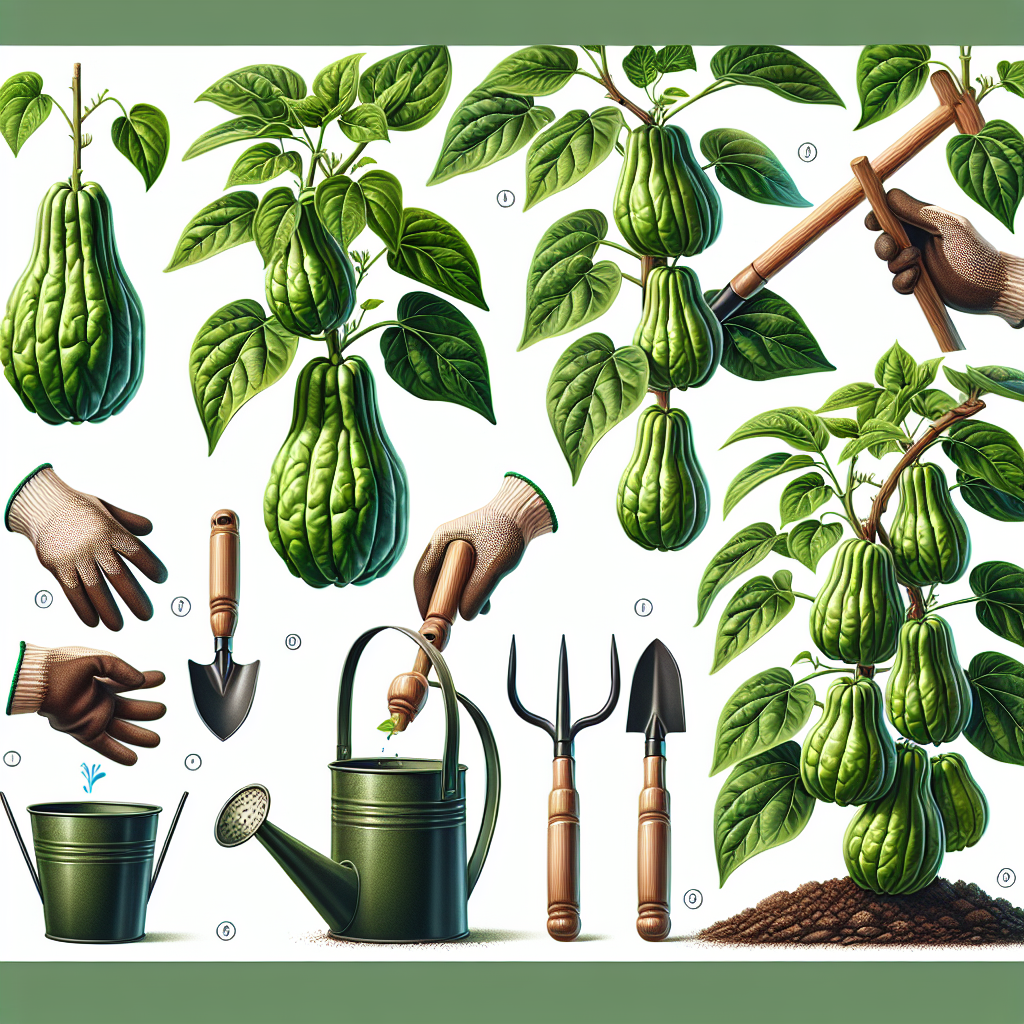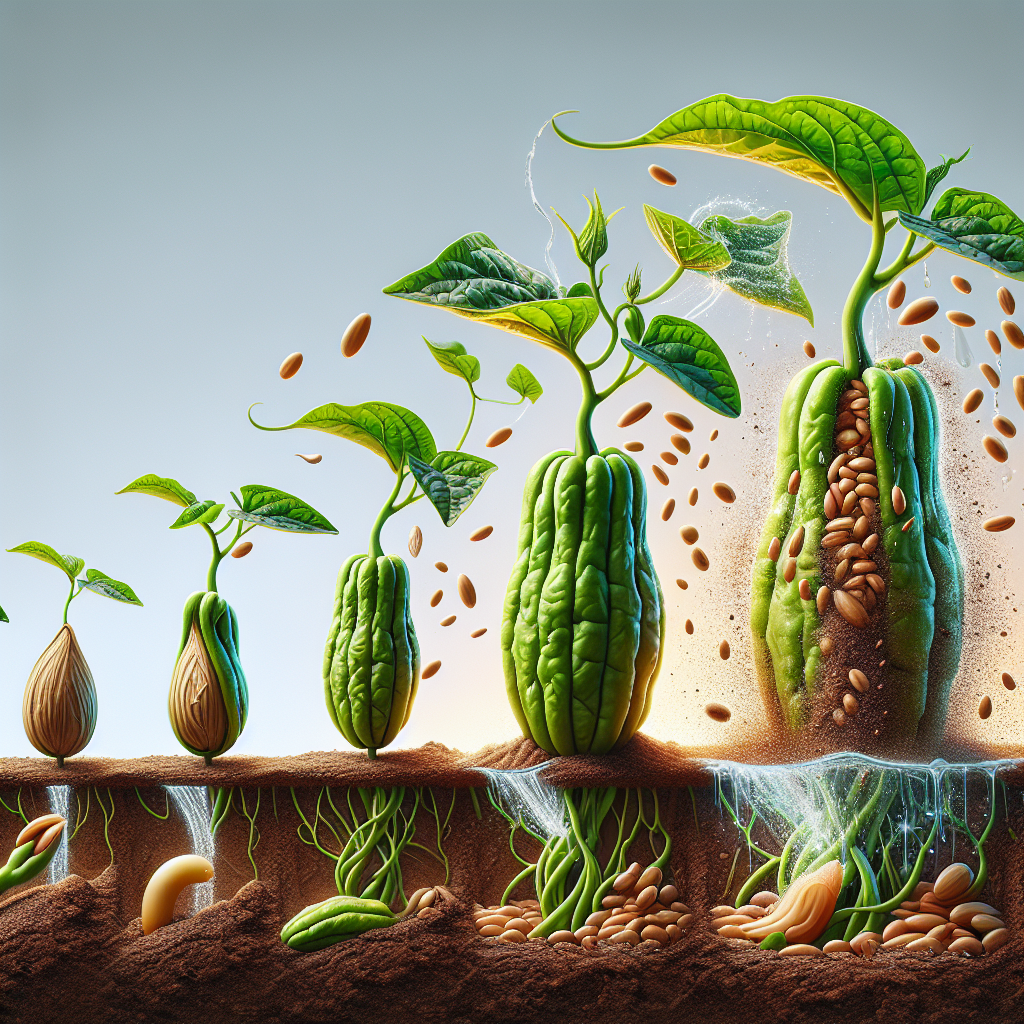Exploring the Secrets to Successfully Growing Chayote at Home
Chayote, scientifically known as Sechium edule, is a versatile and easy-to-grow vegetable that can be cultivated in your own backyard. This perennial vine, native to Mexico and Central America, produces unique pear-shaped fruits that are packed with nutritional benefits. In this article, we will explore the secrets to successfully growing chayote at home, from choosing the right location to nurturing the plant until harvest.
Choosing the Right Location:
When planning to grow chayote at home, selecting the right location is crucial for its successful cultivation. Chayote plants require plenty of sunlight and warmth, so choose a spot that receives at least 6 hours of direct sunlight daily. Additionally, ensure that your chosen location has well-drained soil as chayote plants are susceptible to root rot if exposed to excessive moisture.
Preparing the Soil:
Once you have identified an ideal location for your chayote plants, it is important to prepare the soil properly. Chayotes thrive in nutrient-rich soil with a pH level ranging from 6.0 to 7.5. Start by removing any weeds or debris from the planting area and loosen the soil using a garden fork or tiller. Incorporate organic matter such as compost or well-rotted manure into the soil to improve its fertility and help retain moisture.
Planting Chayote:
Chayotes can be propagated using whole fruits or seedlings purchased from a nursery or online supplier. If using fruits for propagation, select mature chayotes with unblemished skin and sprout them indoors by placing them in a warm area for a week or two until shoots emerge. Alternatively, seedlings can be directly planted into prepared holes in the ground.
Ensure each planting hole is around 12 inches deep and wide enough to accommodate the root ball of your chayote seedling or sprouted fruit. Gently place the plant into the hole, making sure that the soil level remains the same as it was in the pot. Water thoroughly to help settle the soil around the roots.
Supporting the Vines:
Chayote plants are vigorous climbers and require sturdy support structures to grow properly. Providing a trellis, fence, or other climbing apparatus will allow the plant to spread its tendrils and produce an abundant harvest. It is best to install these support structures at planting or when the plant is still young to avoid disturbing its roots later on.

Watering and Fertilizing:
Proper watering is essential for cultivating healthy chayote plants. Water your chayote regularly, keeping the soil moist but not waterlogged. A drip irrigation system or soaker hose is recommended to ensure consistent and adequate moisture levels. During hot summer months, you may need to increase watering frequency to prevent stress on your plants.
Fertilizing chayote plants can help enrich the soil and promote vigorous growth. Apply a balanced organic fertilizer every 4-6 weeks during the growing season, following package instructions for application rates. Avoid over-fertilization as it can lead to excessive vegetative growth at the expense of fruit production.
Pest and Disease Management:
While chayote plants are generally resistant to pests and diseases, there are some common issues you should be aware of. Aphids, mites, and caterpillars can occasionally infest your plants, causing damage to leaves or fruits. Regularly inspect your plants and manually remove any pests you encounter. In severe cases, organic insecticides can be used as a last resort.
Chayotes are also susceptible to fungal diseases such as powdery mildew or downy mildew. To prevent these diseases, provide adequate air circulation by spacing your plants properly and avoid overcrowding or excessive watering that can create humid conditions ideal for fungal growth.
Harvesting Chayote:
Chayote fruits take around 80-120 days to mature, depending on the variety and growing conditions. Harvesting is typically done when the fruit reaches a size of 4-8 inches. Use a sharp knife or pruners to cut the fruit from the vine, leaving a short stem attached. Be careful when harvesting as chayote fruits have spines that can be prickly.
After harvesting, allow the chayotes to ripen for a few days at room temperature until their skin turns greenish-yellow. They can be stored in a cool, dry place for several weeks, but it is best to consume them as soon as possible for optimal flavor and texture.
Conclusion:
Growing chayote at home can be a rewarding experience that allows you to enjoy this unique vegetable’s taste and nutritional benefits right from your backyard. By selecting an ideal location with ample sunlight and well-drained soil, providing proper support for the vines, and practicing regular watering and fertilization routines, you can ensure successful cultivation of chayote plants. Remember to be vigilant against pests and diseases, and practice proper harvesting techniques for a bountiful harvest of delicious chayotes.













